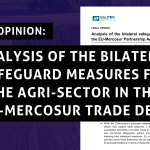The Paris Agreement will not solve the climate crisis single-handedly, but it is so far the most important step the world has taken to tackle it. It signals an end to fossil fuels and a shift to 100% renewables. It creates firm foundations for more ambitious climate policies all over the world.
The Paris Climate Summit concluded with a number of decisions that all governments have agreed to. Some of these decisions will be captured in the legally binding Paris Agreement that will be opened for signature in April 2016 and hopefully then ratified and put in place before the end of this decade.
On the one hand, the Agreement contains provisions that will allow us to speed up the ongoing transition away from dirty fossil fuels and towards 100% renewables and reduce risks of the worst impacts of climate change. On the other hand, regrettably, some elements that would provide more ambition and fairness have been not included in the final text.
The goodies:
The Agreement sharpens the long-term temperature target from staying below 2°C, to staying “well” below 2°C, while pursuing efforts to limit temperature rise to 1.5°C. For the first time ever, governments agreed to a more operational long-term target to reduce global greenhouse gas emissions to net zero in the second half of this century.
Another positive element in the Agreement is the requirement for all countries to come up with contributions to reduce emissions every five year, and that all countries will report and monitor both their emissions and the implementation of their contributions in a coherent way.
Finally, countries recognised that next to mitigation (emission reductions) and adaptation (preparing for climate change impacts), there is a third, equally important pillar in climate action, which is loss and damage – addressing the damaging impacts of climate change. Together with the recognition of the 1.5°C target, this has been a substantial achievement for the countries that are most vulnerable to climate change.
The not-so-goodies:
On the downside, while several agreements were made on review mechanisms, no specific action was agreed in order to bridge the gap between intended actions and what is needed to keep temperature rise well below 2°C, let alone below 1.5°C. Similarly, the commitments made for the provision of financial support for emissions reductions and adaptation in developing countries are
rather vague. Furthermore, references to issues such as phasing out fossil fuel subsidies or tackling emissions from international shipping and aviation were deleted from the text. A new market mechanism was established which may lead to a continuation of dubious forms of offsetting. Last but not least, countries’ contributions will not be legally binding.



